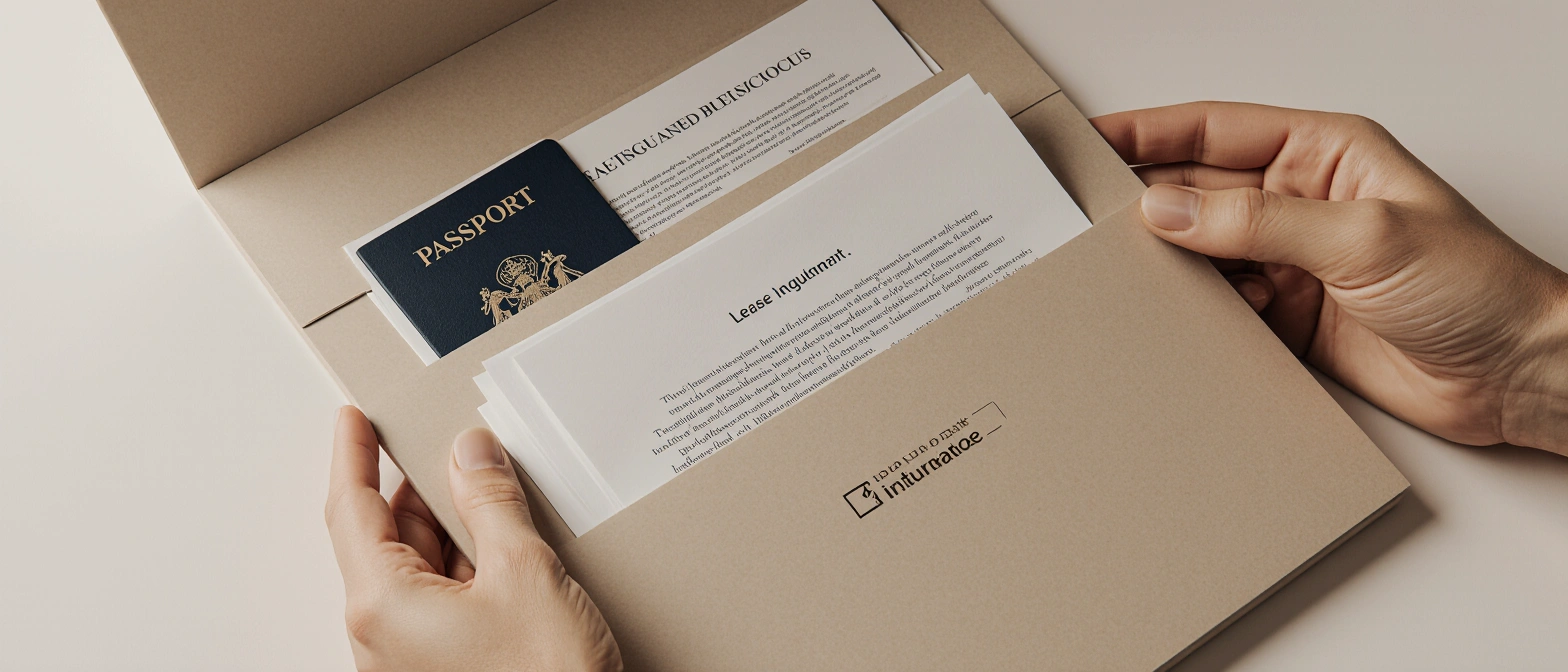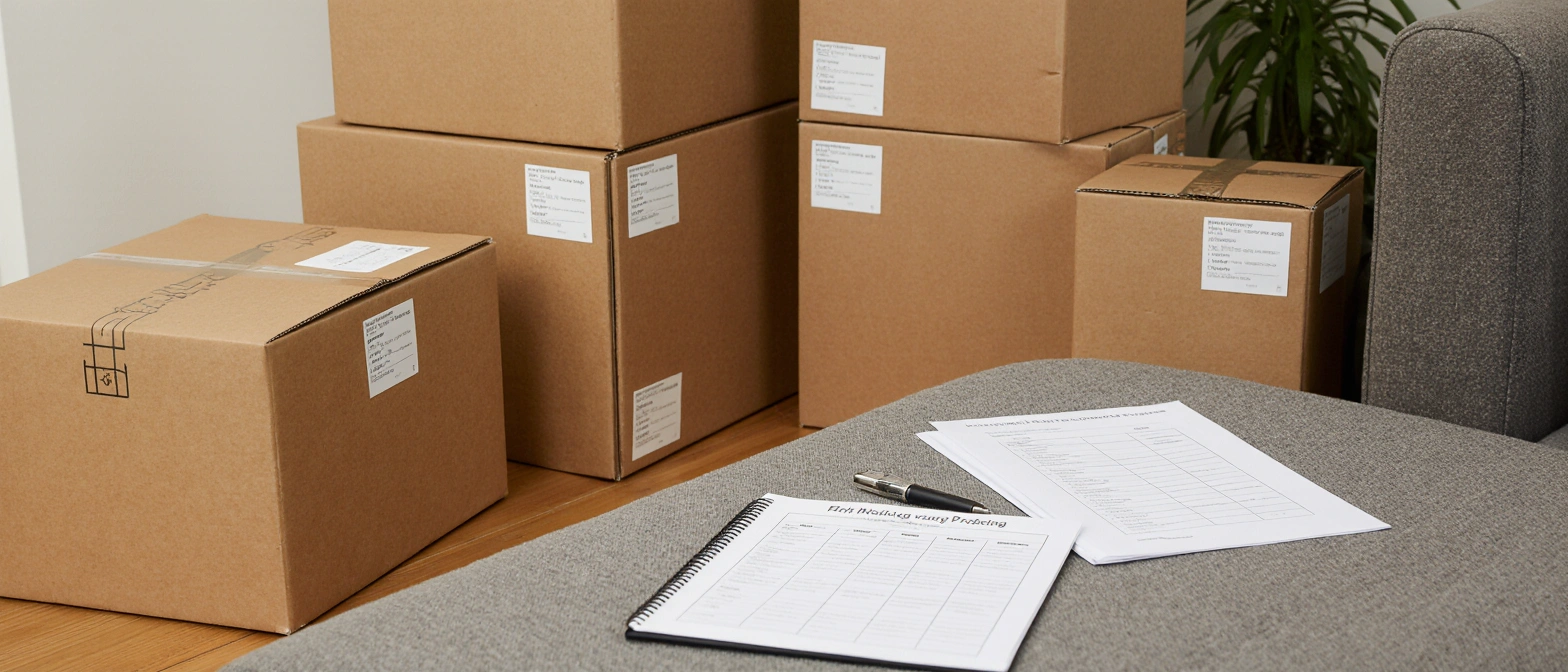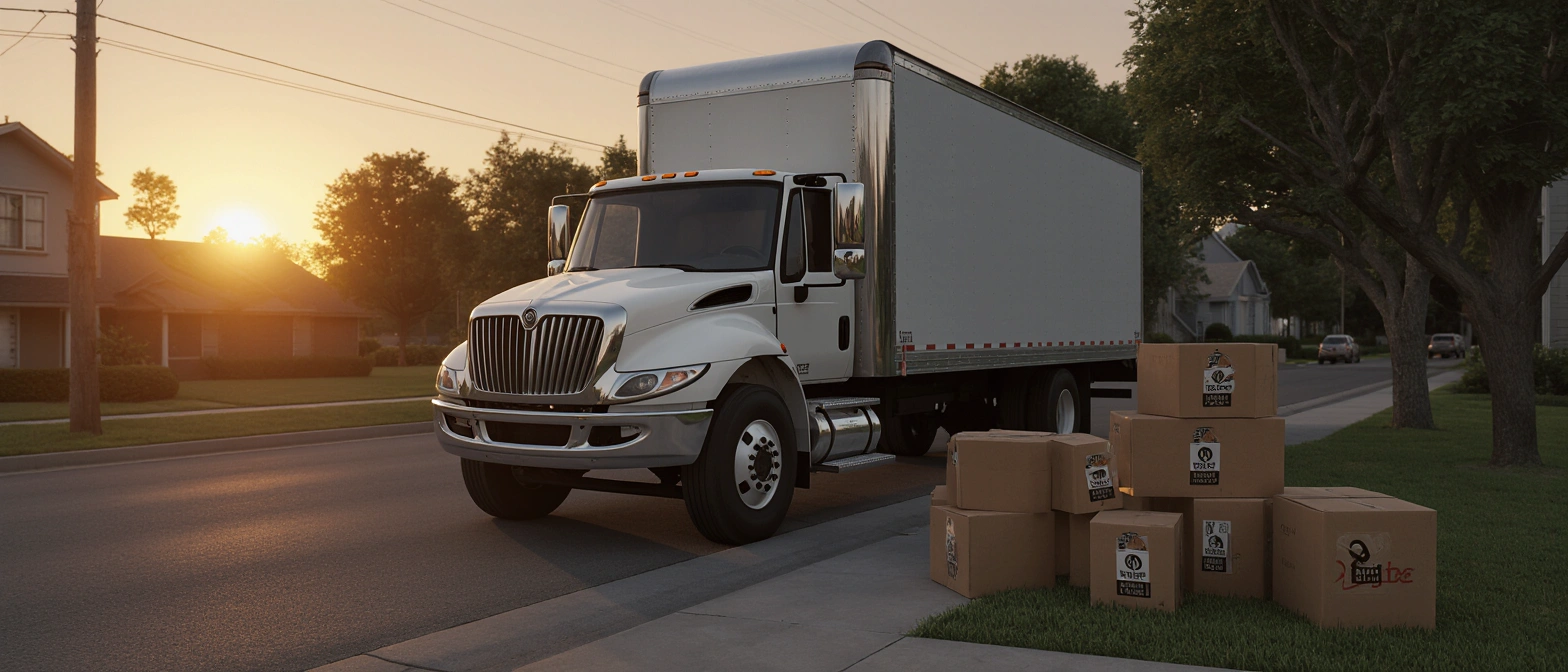Moving to another state isn’t just “more boxes and more miles.”
You’re changing legal rules, tax details, addresses, banks, doctors — and trying to keep life running while everything is in motion
This checklist breaks your out-of-state move into three big blocks:
Follow it step by step, and your move will feel less like chaos and more like a project you control.
Step Zero – Build a Simple Timeline
Before diving into documents and money, you need a rough timeline. Out-of-state moves are much easier when you know what happens when.
6–8 weeks before the move
- choose your move-out and move-in dates
- research and contact interstate movers
- request 2–3 written quotes
- start decluttering (sell, donate, throw away)
- check lease dates / closing dates so you don’t end up “between homes”
4–6 weeks before the move
- book your mover and pay the deposit
- confirm what’s included: packing, assembly, materials, insurance
- start collecting legal and financial documents in one folder
- begin non-essential packing (off-season clothes, décor, books)
1–3 weeks before the move
- finalize address changes and mail forwarding
- confirm travel plans (flights, hotels, route)
- pack an “essentials box” and personal suitcases
- confirm details with your mover and your new building
At United Prime Van Lines, we often walk clients through this timeline on a quick call so you’re not guessing what you should be doing each week.
Legal Checklist for Moving Out of State
This is the part most people forget about until the last moment: documents and state rules.

1. IDs, driver’s license and vehicle registration
Every state has its own deadlines, but in general you’ll need to:
- update your driver’s license in your new state
- register your vehicle (plates, title, emissions if required)
- update your insurance policy so it matches the new state
Practical steps:
- check the DMV (or equivalent) website for your new state
- see how many days you have after becoming a resident
- book an appointment in advance if possible
Take with you:
- current driver’s license
- proof of new address (lease, utility bill, mortgage)
- Social Security card or other ID if required
2. Address changes and mail forwarding
You’ll likely have a long list of places that need your new address. Start with:
- postal service (mail forwarding request)
- bank and credit cards
- employer and payroll
- insurance companies (health, auto, renters, life)
- subscriptions (apps, streaming, magazines)
- online stores where you order regularly
Move these into a simple checklist and cross them off as you update them.
3. Insurance and state-specific rules
Moving out of state can affect your:
- car insurance rates and coverage
- health insurance network
- renters/homeowners insurance
Before moving day:
- call your auto insurer and ask how moving to [new state] changes your policy
- check whether your health plan covers care in the new state or if you’ll need a new plan
- schedule the start date for your new renters/homeowners policy to match your move-in date
4. Kids, schools and records
If you’re moving with children, add this to your legal checklist:
- request school records and transcripts
- get vaccination records and health forms
- check enrollment requirements in the new school district
- ask the new school what you need to bring on day one
5. Pets and regulations
For pets, some states and buildings require:
- up-to-date vaccination records (especially rabies)
- microchip info
- health certificate from a vet (sometimes for air travel)
- breed or size restrictions in certain rentals
Collect all pet paperwork in a small folder you keep with you, not in a box on the truck.
Financial Checklist for Moving Out of State
Out-of-state moves hit your wallet in several places at the same time: moving costs, housing, travel, deposits, and everyday life while all this is happening.

1. Build a realistic moving budget
Include:
- moving company or truck rental
- packing materials (boxes, tape, bubble wrap, covers)
- travel costs (gas, flights, hotels, food on the road)
- deposits (new rent deposit, utility deposits)
- cleaning and minor repairs in the old place
- storage costs (if there’s a gap between homes)
Then add a buffer of 10–15% for surprises. Out-of-state moves almost always have at least one.
If you request a quote from United Prime Van Lines, we can break down the cost for you and help you see what’s fixed and what depends on weight, distance or services.
2. Compare moving options the right way
Don’t just compare total price. Compare:
- what’s included in the estimate (packing, materials, stairs, long carry)
- what type of estimate it is (binding, non-binding, not-to-exceed)
- level of liability/valuation coverage
- any potential extra fees (shuttle, storage, date changes)
A slightly more expensive estimate with clear terms and solid coverage is often cheaper in the long run than a too-good-to-be-true price with hidden conditions.
3. Banking, credit and taxes
Before the move:
- check whether your current bank has branches or ATMs in your new state
- if not, decide whether to open an account with a more convenient bank
- update billing addresses for all credit and debit cards
For taxes:
- note the date you become a resident of the new state
- save your lease or closing documents — they may matter at tax time
- if you work remotely, understand where your income will be taxed
If your situation is complex (self-employed, LLC, multiple states), it’s worth talking to a tax professional at least once.
4. Utilities, services and subscriptions
On the “old home” side:
- schedule shutoff dates for electricity, gas, water, internet, trash
- confirm final bills and forwarding addresses
- take dated photos of meter readings on move-out day
On the “new home” side:
- schedule start dates for utilities a day or two before you arrive, if possible
- set up internet installation (these slots book fast)
- update delivery addresses for services like Amazon, meal kits, etc.
Logistical Checklist for an Out-of-State Move
This is everything about stuff, dates, keys, and the physical move itself.

1. Housing, dates and overlap
Out-of-state moves often involve a gap between:
- the day you must leave your current home
- and the day you can fully move into your new one
To avoid panic:
- confirm lease end/closing date for your current place
- confirm exact move-in date and key pickup for the new place
- ask your mover about temporary storage if you need it
At United Prime Van Lines, we can help with short-term storage if your keys and your truck schedule don’t line up perfectly.
2. Declutter before you pack
Every item you move out of state costs money, time and space. Before you touch boxes:
- go room by room and sort into: keep / sell / donate / trash
- be especially strict with heavy items (books, old furniture, equipment)
- list valuable items you want to sell and set deadlines to get them out
The less you move, the simpler your logistics become.
3. Smart packing and inventory
For an out-of-state move, packing is not just about “not breaking things.” It’s also about finding them on the other end.
Tips:
- pack by room and label every box with room + short content + priority
- keep a simple inventory on your phone or in a notebook
- use small boxes for heavy items, medium for most things, large only for light bulky stuff
- create one “Open First – Essentials” box for each person or for the family
Your essentials box might include:
- basic dishes, kettle, coffee/tea
- toiletries and medication
- a set of clothes for a few days
- chargers, power strip, Wi-Fi router
- minimal tools (screwdriver, utility knife, tape)
4. Travel plans for you (and your family)
While your belongings ride in the truck, you still have to get from A to B.
Decide:
- will you drive or fly?
- if you drive, plan daily distances, hotels and gas stops
- if you fly, plan how you’ll get from the airport to your new place or temporary housing
If you have kids or pets:
- plan shorter driving days
- book pet-friendly hotels if needed
- keep food, water and comfort items handy
5. Moving day coordination
A well-organized move-out and move-in day feels completely different from a rushed one.
Before moving day:
- reserve loading docks or elevators in both buildings if available
- ask about parking rules for moving trucks
- let neighbors or the building manager know about your move date
- confirm move time window with your moving company
On the day itself:
- keep important documents, keys and valuables with you, not in boxes
- walk through each room with the crew leader at the start and at the end
- do a final empty-home walkthrough before locking the door
At United Prime Van Lines, you’ll have a crew leader on site and a coordinator you can reach by phone — so if anything unexpected comes up, you’re not dealing with it alone.
Where United Prime Van Lines Fits Into This Checklist
You don’t have to do all of this on your own. As an interstate moving company, we can plug into your out-of-state move at several key points:
- help estimate volume, weight and cost so your financial plan is realistic
- explain documents and your rights so the legal side feels clear
- handle packing, loading, transport and unloading so the logistics run smoothly
- coordinate dates, storage and access with you and your buildings
Think of this checklist as your roadmap.
If you want a partner to walk it with you instead of doing it all yourself, we’re here to make your out-of-state move calmer, more organized and a lot less stressful.






